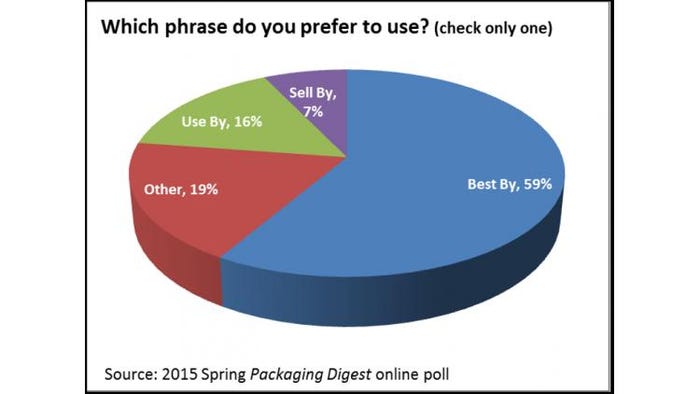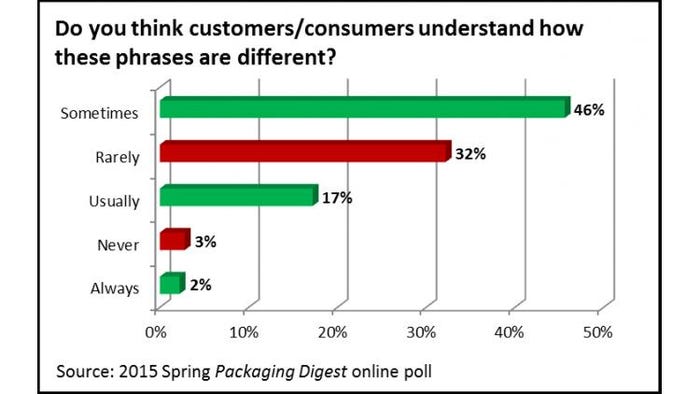Looking for the best date code?
Date codes on food and beverage packages continue to be a source of confusion for consumers as they try to balance minimizing product waste with safe consumption. There are many ways to explain when your product should be used by but a recent Packaging Digest survey revealed which phrase you prefer to use.
The vast majority (91%) of food and beverage companies answering our poll currently print a date code on their product packaging. For the 9% that don’t, the reasons varied, from “Our product is direct retail for immediate consumption today” and “Very high product turnover rate. We do use batch coding for QC” to “Not needed” and “Our products are ‘thaw then sell.’ Date codes are applied at store level.”
A couple respondents admitted that packaging department hold-ups were at fault: “Don't have coding machine” and “Still figuring packaging out.”
When we asked which phrase was preferred to use, “Best by” won out at 59%. Surprisingly, the next highest option was “Other” at 19%.

These survey takers wrote in the “Other” phrase they prefer to use and we see a lot of variety in the way companies indicate freshness, some quite creative. Such as:
“Guaranteed fresh until printed date”
“Discard after”
“Best served before”
“Expiration date”
Several respondents said they simply use the production or packed date, which is not necessarily decipherable by consumers.
And others were on either end of the spectrum:
None: “We don't like any of them. Currently it is just a Julian date for our resellers to use. We would use Best By and are still considering it.”
All: “We use all three depending on product and where it is produced at. Most of our product is co-packed so it can vary.”
By nearly two to one, respondents said they think customers/consumers understand how these phrases are different from each other. 65% selected positive responses “Always,” “Usually” and “Sometimes” versus 35% choosing “Rarely” or “Never.”

This might indicate that current date coding practices and consumer education in the U.S. is adequate. However, according to the September 2013 Natural Resources Defense Council report The Dating Game: How Confusing Food Date Labels Lead to Food Waste in America, “It is alarming how much [food] Americans throw away, despite the serious ethical, environmental and financial implications of this waste. An estimated 40% of food in the United States goes uneaten, and according to even the most conservative estimates, Americans waste 160 billion pounds of food each year.”
The report points out that “Misinterpretation of the date labels on foods is a key factor leading to this waste.”
Could there be a better way for consumers to know when their foods and beverages are okay to be consumed? Stay tuned for more eye-opening results from this survey on the future of date coding, as well as its challenges. [8-21-15: "Part 2: If not a date code, then what?"]
About the Author(s)
You May Also Like




